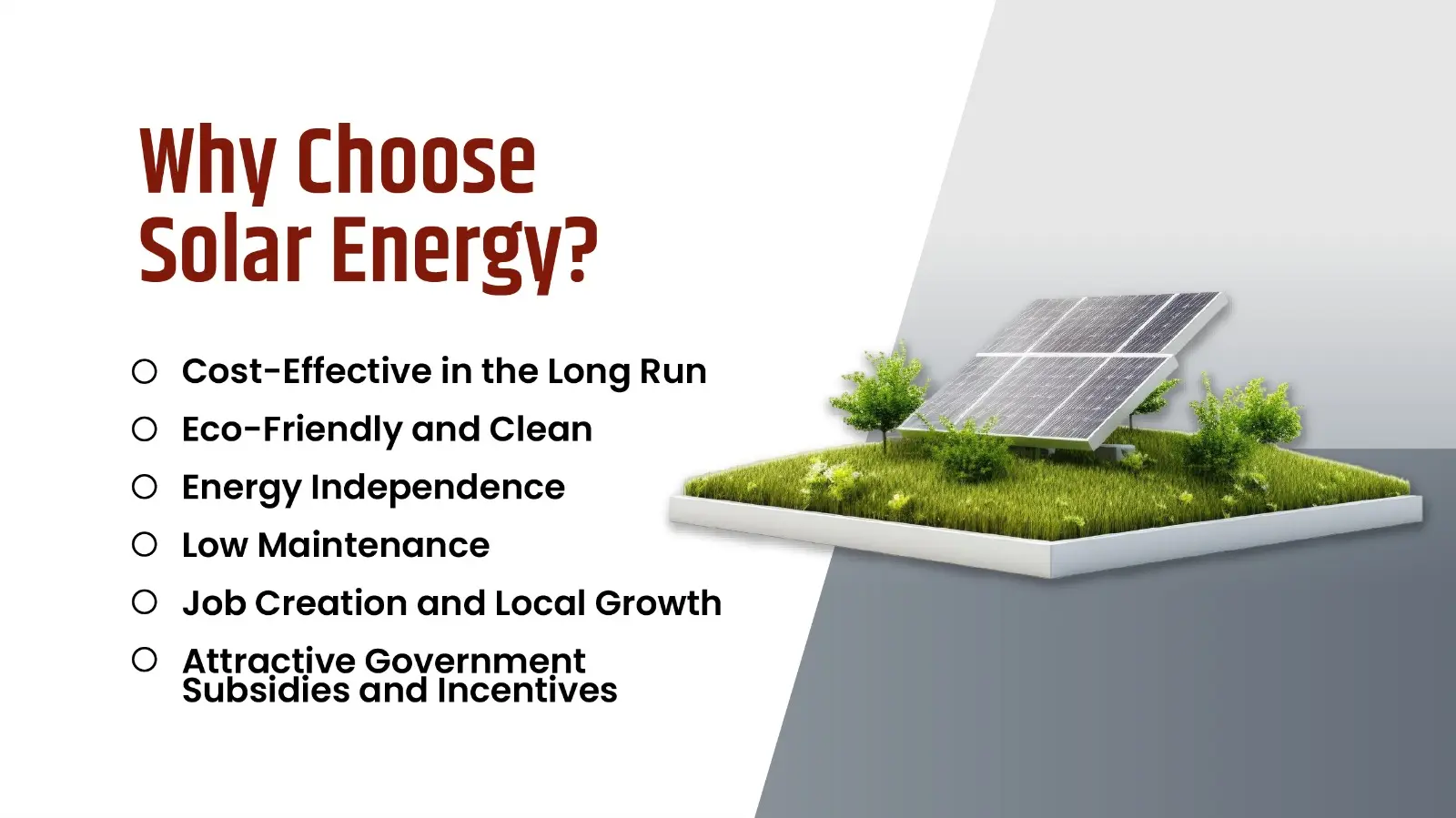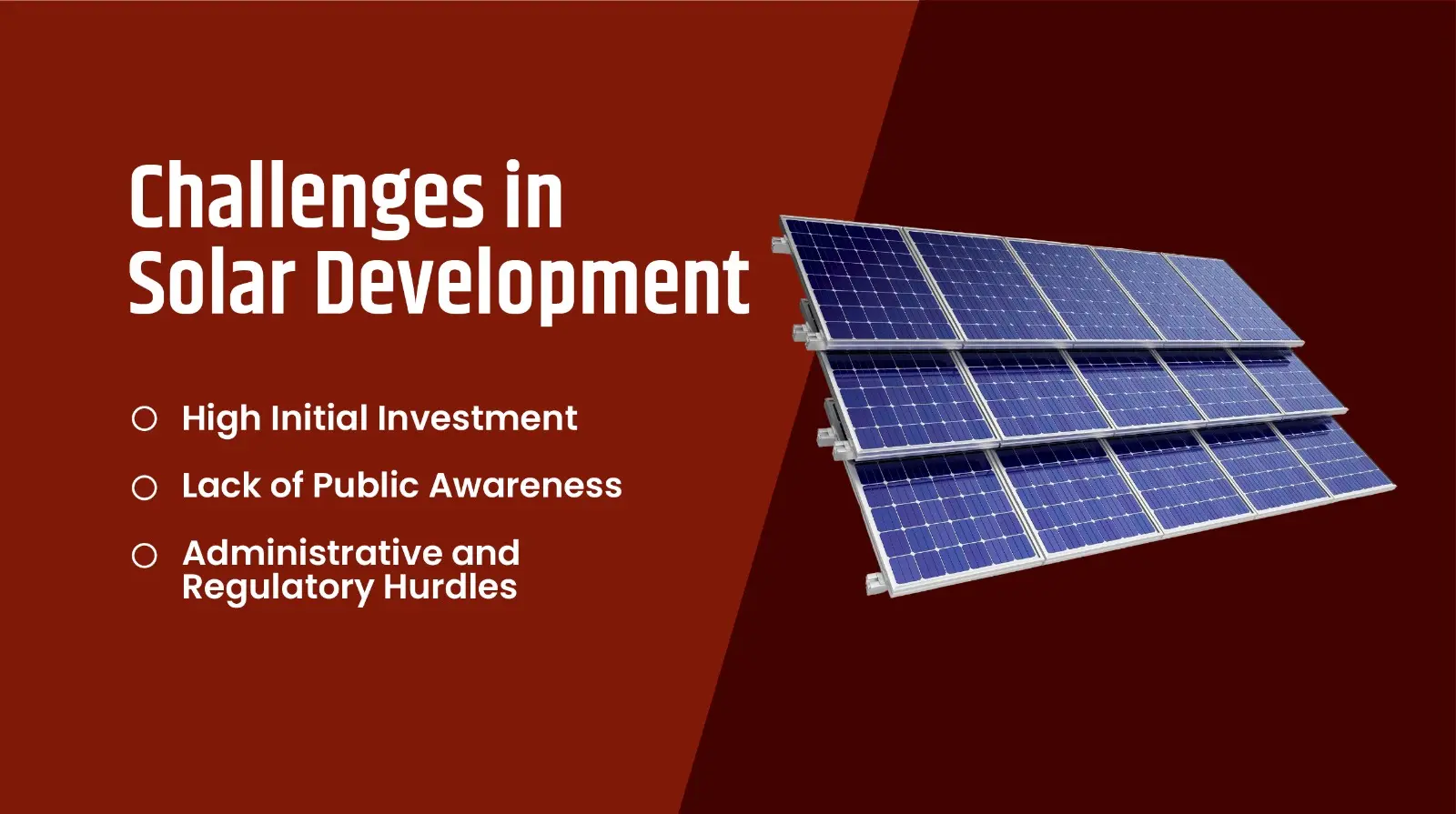The Rise of Solar Technology in India
As the world continues exploring renewable energy sources, solar energy still stands firm as one of the best. In countries like India, with around 300 sunny days, harnessing solar power becomes even easier. And with the help of advancing solar technology in India, everyone is looking forward to the sun as an amazing source.
In this blog, we’ll explore how solar energy in India is becoming one of the most preferred choices of homeowners and businesses. We’ll also take a look at the opportunities and challenges in the solar energy sector.
Potential of Solar Energy in India
We already know that India is a sunny country that sees a lot of sunshine throughout the year. This is why solar technology in India has been advancing to make the most of it. In India, there's an estimated potential of producing 5,000 trillion kilowatt-hours (kWh) of clean energy annually.
The best part is that the energy that will be generated will be more than enough. The potential solar energy sector in India needs to be taken into consideration. With the right policies, infrastructure and awareness, this potential has the power to turn into an amazing reality!
Why Choose Solar Energy?

Before we move on to the best solar technology in India, let's go through the reasons why one should go solar.
-
Cost-Effective in the Long Run
The initial solar panel installation may seem a bit expensive to many, however, there's an upside to that. Once you get your solar panels installed, it will make your electricity bills smaller and your savings bigger. Also, many Indian states offer solar panel subsidies and tax benefits. This makes solar energy in India even more affordable!
-
Eco-Friendly and Clean
Solar energy is a green and clean source of energy and it is valued for the same. In contrast to our conventional ones, such as coal and other fossil fuels, solar energy does not emit harmful greenhouse gases and pollutants. So, this option is a better way to power your homes or businesses.
-
Energy Independence
Before solar technology in India was introduced, everyone was relying on a traditional electricity grid. However, this grid didn't reach remote areas. With the amazing solar power, now rural areas and even households in urban settings can benefit from solar power. It reduces your reliance on the unreliable grid.
-
Low Maintenance
With the advancement in solar technology in India, modern solar panels require very minimal maintenance. The best part is that they are durable and last up to 25 years. They are reliable, clean and low maintenance. You don't have to spend a fortune on their maintenance.
Read more about why annual maintenance contracts are important.
-
Job Creation and Local Growth
The growing popularity of solar energy in India is creating a space for more jobs and supporting growth too. The solar energy sector in India is allowing jobs for people in the field of manufacturing, installation and maintenance.
-
Attractive Government Subsidies and Incentives
With amazing subsidies and incentives, the Indian government is strongly encouraging solar energy. Many initiatives like the Rooftop Solar Scheme offer up to 40% financial assistance for installing solar panels. This makes solar power affordable.
Read more about – 2 kw solar panel price in India with subsidy & 1 kw solar panel in India
Solar Technology in India – Types and Uses
India is growing in the sector of solar energy and we can see it through the emerging solar technology in India.
-
Solar Photovoltaic (PV) Technology
Photovoltaic panels are the most common type of solar setup. This solar technology in India is famous and widely applied. You can often find these panels on rooftops or open lands to power homes, street lights and water pumps.
-
Solar Thermal Technology
There are different uses of solar technology and one of them is heating. This solar thermal technology uses sunlight to produce heat. Through this heat, you can heat up water or even generate steam that drives turbines. This technology is useful in buildings that require a constant hot water supply.
-
Floating Solar Technology
Urban areas in India are becoming crowded and land is becoming more expensive. For such cases, floating solar technology in India offers a really smart solution. Solar panels get installed on lakes, reservoirs or other water bodies. This saves land and also keeps the panels cooler while improving their efficiency.
-
Solar Storage Systems
Solar energy storage is another amazing solar technology in India that is gaining popularity. The integration of lithium-ion and other types of solar batteries helps the solar system store the excess energy for use at night or during power cuts. This makes solar power very reliable and consistent.
Uses of Solar Technology in India
-
Rooftop Solar Systems – Many homes and apartments generate electricity using rooftop solar systems.
-
Solar Water Pumps - In India, different kinds of solar water pumps run on solar energy. Particularly in areas without a dependable power source, these pumps aid in the growth of the agriculture industry.
-
Solar Water Heaters – This is common in hotels and hospitals for heating water.
-
Solar Air Conditioners – The use of solar technology for air conditioning is a green and clean method. Solar air conditioners are amazing especially in the summer months.
Challenges in Solar Development

-
High Initial Investment
We know that solar power greatly helps save money in the long run, but the initial investment is still high. Especially for people who come from a middle-class background may see it as challenging. This often makes them hesitant to switch to solar energy.
-
Lack of Public Awareness
People, especially those who live in rural areas are mostly unaware of the benefits and accessibility of solar power in India. And because many don't know about the government subsidies and incentives, they don't get started. However, this challenge can be resolved with awareness campaigns and educational programs.
-
Administrative and Regulatory Hurdles
Setting up large-scale solar projects isn’t easy. It requires government approvals, land acquisition and material supply. And most of the time, delays in permission can slow down the development.
There are many other challenges that can be resolved with proper solutions and measures.
Conclusion
The adoption of solar energy in India has been successful even with the challenges and high demand for power. India’s solar journey is full of promise and great potential for sustainable living.
With the continued government support, innovation and increased awareness, the solar energy sector will rise beyond the challenges and restrictions. Also, the right solar company will offer reliable solar solutions and services to make the future of India clean and brighter than ever.
